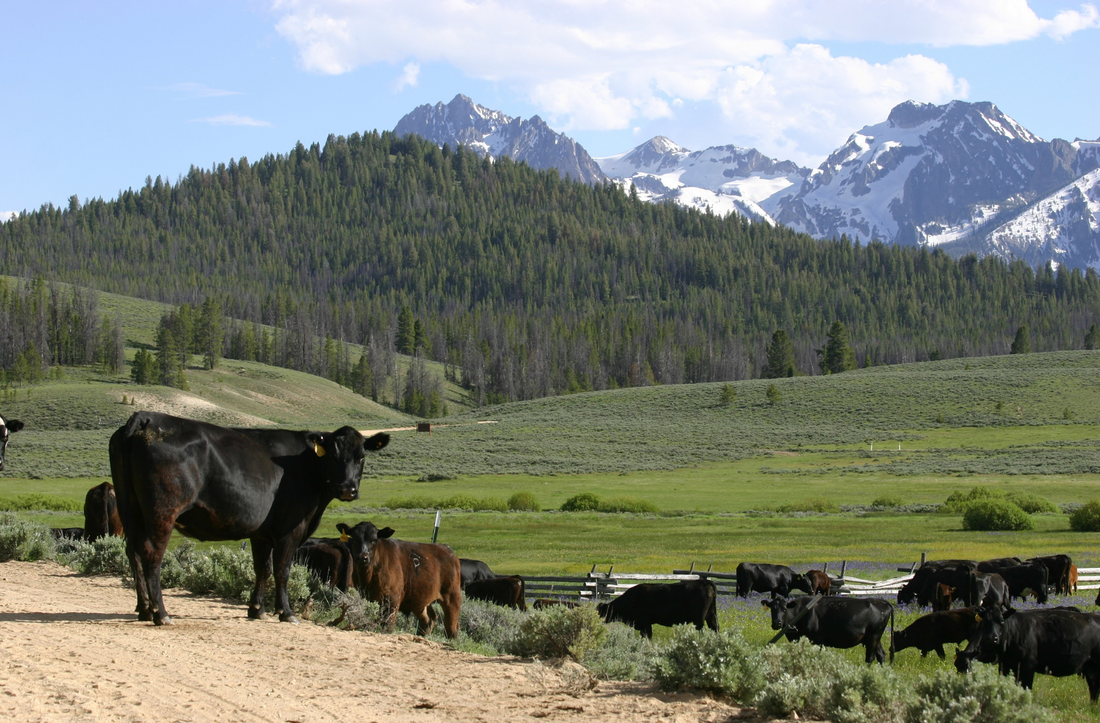
Grass-Fed vs. Grain-Fed Beef
The Carnivello TeamNearly half of Canadians enjoy red meat daily—that’s a lot of steak nights. But when the choice is grass-fed or grain-fed, which best suits your palate, your health goals, and your kitchen? Consider this your elegant, no-nonsense guide to buying with confidence.
You’ve heard it before: you are what you eat. Your beef is, too. A steer’s diet shapes flavour, marbling, and nutrient profile—details that matter when you’re curating a truly elevated meal.
Spoiler: neither style is inherently “better.” Each has distinct strengths, trade-offs, and culinary sweet spots.
What Is Grass-Fed Beef?
As the name suggests, grass-fed cattle primarily graze on pasture. In places with year-round growth (think parts of Australia), grass-fed can be consistent across seasons; in colder climates like Canada, cattle also consume hay, baleage, and forages when pastures are dormant—so flavour and leanness can vary by origin.
Why it’s loved: a more natural diet, typically leaner cuts, and a nutrient profile that trends higher in Vitamin A, Vitamin E, and Omega-3s.
What to know in the kitchen: less intramuscular fat means grass-fed can firm up faster—rewarding careful cooking.
Pros of Grass-Fed
✅ Naturally leaner; often higher in Omega-3s and fat-soluble vitamins
✅ Aligns with traditional grazing and animal wellbeing
✅ At Carnivello Foods, our grass-fed selections are sourced from producers committed to responsible, additive-free practices
Considerations
🚫 Typically higher priced due to supply and slower finishing
🚫 Subtler marbling → can read as “less buttery” to some palates
🚫 Availability can be limited depending on season and market
🚫 Environmental impact varies by origin (imports travel farther)
What Is Grain-Fed Beef?
Most cattle begin life on pasture. Grain-fed cattle are then finished on carefully balanced rations (grains, corn, soy/corn by-products, targeted supplements) designed to promote consistent growth and signature marbling—that’s the velvet texture and rich flavor many steak lovers crave.
Why it’s loved: reliable tenderness, juicier bite, and broad local availability.
Pros of Grain-Fed
✅ Excellent value and easy to find locally
✅ Luxurious marbling for juiciness and flavour
✅ Broad cut selection and grading options
✅ Often a smaller transport footprint when sourced locally
Considerations
🚫 Higher overall fat content
🚫 Some shoppers prefer pasture-only systems
🚫 Less “wild-forage” character in flavor
Prefer grain-fed raised without added hormones or antibiotics? Look for Carnivello Foods’ All-Natural Beef options.
“No-Hormone & Antibiotics” vs. Grain-Fed
“No added hormones” means exactly that—no hormonal implants during the animal’s life (all animals produce natural hormones regardless of diet). Grass-fed programs often avoid added hormones and routine antibiotics; some grain-fed programs do as well. Outcomes differ:
Grass-fed, no-added-hormones: typically smaller carcass, longer time to finish
Grain-fed with added hormones: larger carcass, shorter finishing time
If label integrity matters to you, buy from a butcher who can trace and verify the program— like Carnivello Foods.
Questions to Help You Choose
How do flavor and texture compare?
Grain-fed: richer marbling, sweeter/rounder flavor, sumptuous mouthfeel
Grass-fed: leaner profile, brighter/mineral-forward notes, clean finish
Carnivello Tip:
For maximum flavor indulgence, choose grain-fed.
For most natural grazing character, choose grass-fed.
What about environmental impact?
Sustainability is nuanced. Grain-finishing can shorten time to market and use less water/land per kg of beef; imported grass-fed may travel farther. Conversely, well-managed rotational grazing can support soil health and carbon cycles.
When to buy?
Grass-fed and grain-fed options depend on the season . If “local first” is your priority, grain-fed is usually more readily available year-round; select grass-fed options are available as supply allows.
What’s the price difference?
Grass-fed typically commands a premium—animals take longer to finish and usually yield leaner carcasses. Expect a higher price per pound versus comparable grain-fed cuts.
Which is healthier?
Both are high in protein, iron, and zinc. Grass-fed trends leaner and may offer different fat composition; grain-fed offers satiety-boosting marbling. If you’re avoiding added hormones or antibiotics, choose clearly labeled programs—Carnivello Foods lists these attributes so you can buy with certainty.
The Carnivello Foods Standard
There’s a lot of marketing out there. What matters most is who you trust to select, verify, and cut your beef.
At Carnivello Foods, we curate both grass-fed and grain-fed products with uncompromising standards—clarity of origin, program integrity, and exquisite eating quality.
Your taste. Your values. Your menu - elevated.
Choose confidently with Carnivello Foods.
RESOURCES:
http://greatsouthernfarms.com.au/#skip
https://www.cattle.ca/cca-resources/industry-stats/
https://www.healthline.com/nutrition/grass-fed-vs-grain-fed-beef
https://www.consumerreports.org/cro/magazine/2015/08/why-grass-fed-beef-costs-more/index.htm
https://www.businessinsider.com/grass-fed-claims-beef-bogus-usda-packaging-2016-2
https://www.beefmagazine.com/agenda/what-s-more-sustainable-grain-fed-or-grass-fed-beef
https://rainwaterrunoff.com/grass-fed-beef-vs-grain-fed-which-is-better-for-taste-and-health/
https://www.fitmole.org/grass-fed-versus-grain-fed-beef/
https://carnivoreaurelius.com/grass-fed-vs-grain-fed/
https://www.statista.com/statistics/735166/consumption-of-milk-per-capita-canada/
https://brokenarrowranch.com/blogs/wild-and-pure/hormone-free-meat
